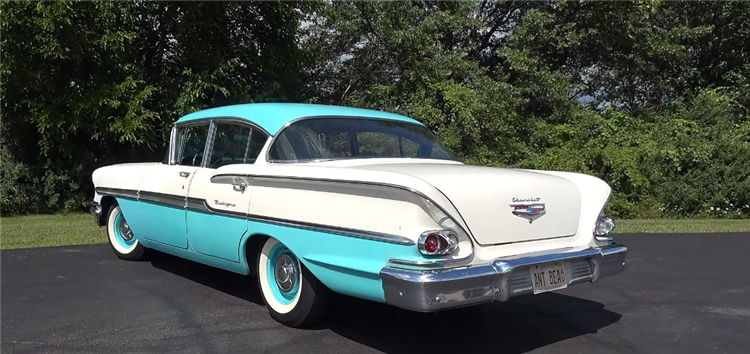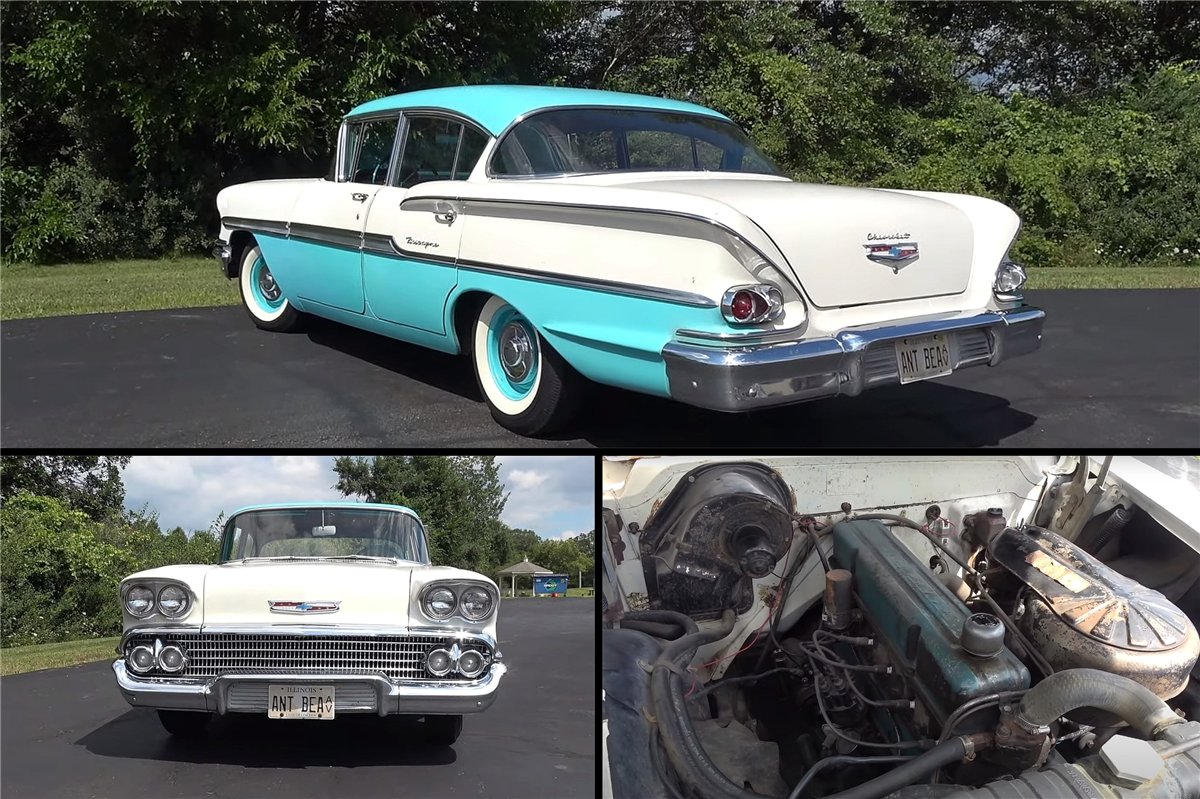For Chevy, 1958 was a significant year. In honor of its 50 years of auto manufacturing, General Motors ordered new top models for each brand that had a similar design. The Impala was unveiled by Chevrolet as their flagship full-size vehicle. The Impala was positioned above the well-known Bel Air and was one of four trim levels in the inventory, with the Delray serving as the base model. Full-size Chevys had been sporting the latter emblem since 1954. However, the Biscayne was another brand-new nameplate that was introduced.
Named after Biscayne Bay, near Miami, Florida, the new trim was placed between the Delray and Bel Air in the lineup. Unlike the Delray, which was discontinued after 1958, the Biscayne soldiered on through 1972. It became the entry-level Chevrolet full-size in 1959 and spawned a lower-priced fleet version in 1960. Chevrolet redesigned its full-size car lineup in 1959, leaving all 1958 versions, regardless of trim, as one-year gems. So, while it’s not as sought-after as the Impala or the Bel Air, the 1958 Biscayne is just as unique. And because it doesn’t get as much love as its fancier siblings, it’s also notably scarcer nowadays.
In 1958, Chevrolet sold an astounding 1.2 million full-size vehicles. Although there isn’t a precise breakdown according to trim levels, analysts concur that range-topping Impala cars accounted for 15% of all vehicles sold in that year. A bit over a million cars bearing the Bel Air, Biscayne, and Delray emblems remain, according to this estimate. Given that the Bel Air was presumably a more well-liked option at the time, it’s possible that between 300,000 and 400,000 Biscaynes were sold in 1958. Yes, that’s a huge number that indicates how frequent the first-year full-size is. Nevertheless, these autos don’t last very long.

Again, I don’t have any precise figures to run by, but you can check out video footage from any junkyard out there, and you’ll get what I’m saying. Most Biscaynes were abandoned once newer cars became available. And those that weren’t scrapped immediately are still rotting away, and many are still parked in barns and backyards. Moreover, examples with solid body panels are usually parted out to restore Impalas.
Lastly, restorations of 1958 Biscaynes are unusual. They are typically viewed as classics that aren’t worth completely rebuilding because of their poor market value now in comparison to the Impalas and even the Bel Airs. All in all, reliable examples that continue to operate are becoming increasingly rare.
That said, if you’ve seen a 1958 Biscayne on the road recently, you can consider yourself very lucky. If you haven’t, classic car enthusiast Lou Costabile just documented what may just be the finest survivor of its kind. Yup, this gorgeous two-tone Biscayne is not the result of a rotisserie restoration but a classic that’s been pampered since day one.
How is that possible? Well, the original owner kept it through the 1980s and didn’t drive it much. Specifically, this car was purchased new by a lady who only drove it to the church and the school she was teaching at. When she passed away, the Biscayne was bought by the current owner’s uncle and went into storage for about ten years.
Fast forward to 1998, the four-door sedan ended up with the current owner in the same condition you see today. It had only 29,000 miles (46,671 km) on the odo, and Terry drove it for almost 10,000 more miles (16,093 km) through 2023. The odometer shows 38,500 miles (61,960 km) as of this writing, which is impressively low for a vehicle that’s 65 years old.

On top of that, the Biscayne is in fantastic condition. Look close enough, and you’ll notice some scratches and chips in the paint, but that’s about it. There’s only minor wear and tear inside the cabin, while the engine bay is cleaner than most modern cars. Granted, the block and some other components could use a repaint, but it’s the kind of patina I’d also like to preserve.
The automobile also has a gorgeous color scheme. The interior is decorated in two hues of green, while the exterior features a sophisticated white over turquoise scheme, complete with a turquoise roof. In 1958, Chevy dubbed these hues Forest Green and Glen Green. Arctic White and Tropic Turquoise make up the exterior. At the time, Chevy also had a Snowcrest White that was comparable, but the only two-tone paint option was Arctic White.
This Biscayne’s output is provided by a 3.9-liter (235 cubic inches) inline-six engine. When it was new, it had a horsepower rating of either 136 or 145, making it the base engine for any full-size Chevy. Although the mill is no longer remarkable or desirable, it still sounds good and has sufficient power to move the large four-door at respectable speeds.
To be honest, I don’t care even though I know it would have been lovely to see a V8 under the hood. This Biscayne is far too charming and unique to be dissatisfied with its lack of strength. It is unlike anything else you will likely see on the road for a very long time. Bravo to the owner for keeping it that way.
